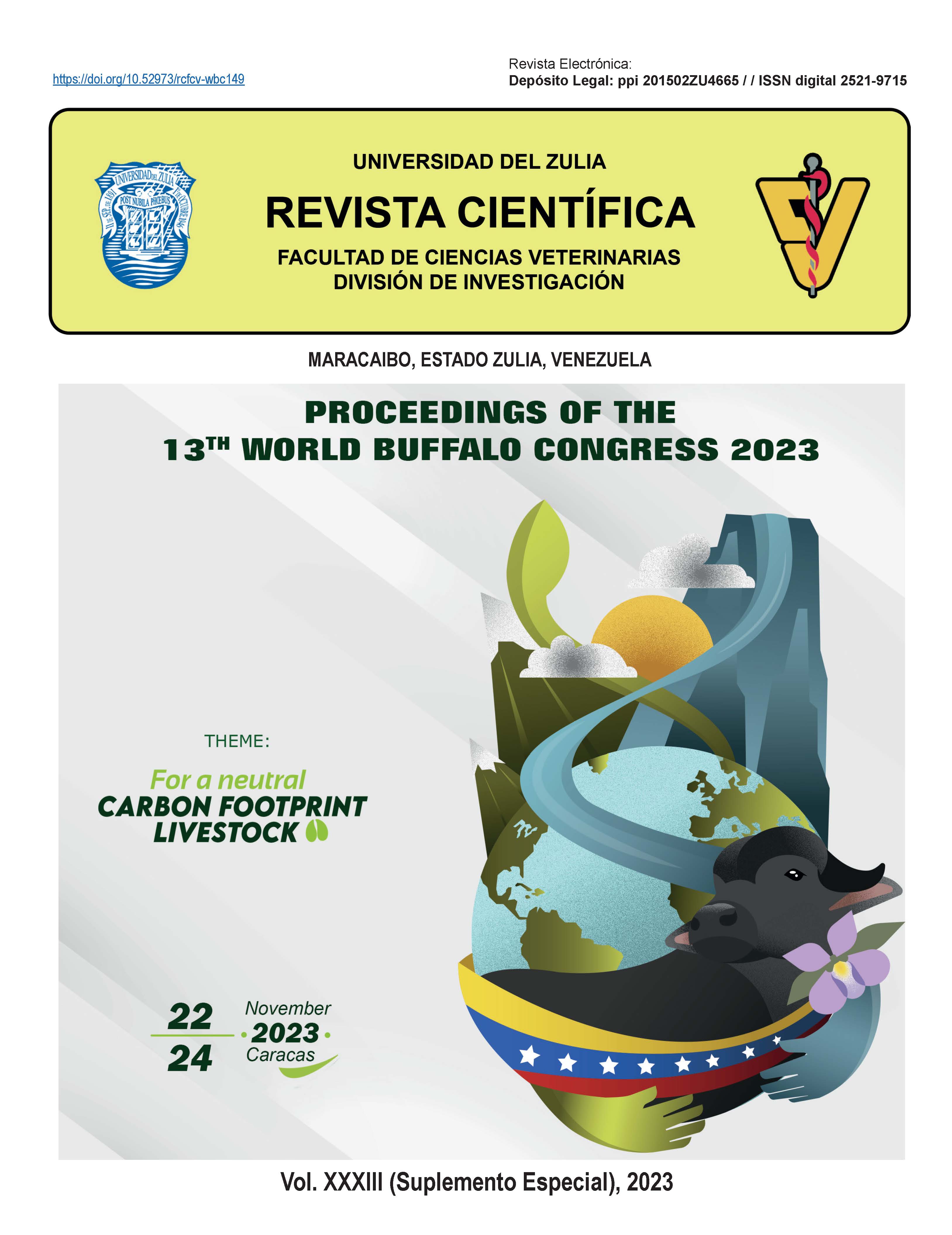Reproductive management and parity influence reproductive activity in a tropical buffalo herd
Abstract
A retrospective study (2000-2022) was conducted on a commercial buffalo farm in Merida State, Venezuela, to evaluate the effect of reproductive management and parity on reproductive performance. Reproductive management was split into two periods: 1) 2000-2013 (n=1382) and 2) 2014-2022 (n=2128). In the former, estrus synchronization protocols were applied mainly between November and February, while in the latter, the hormonal protocols were applied during the whole year. The number of calving was divided into 1 (1P) and ≥2 (2P). The general linear model analyzed the intervals calving-estrus and calving-conception and the number of services per conception. The conception rate at first service and calving frequency were analyzed by the Chiquare test. Reproductive management affected calving-estrus (p<0.0001) (109.4 ± 2.0 and 99.2 ± 1.3 days for periods 1 and 2) and calving-conception (p=0.0476) (135.9 ± 3.7 and 149.6 ± 2.7 days for periods 1 and 2) intervals, and services/conception (p<0.0001) (1.52 ± 0.01 and 1.39 ± 0.01 for periods 1 and 2). Conception rate at first service was lower in period 1 (60.1%) than in period 2 (69.1%) (p<0.0001). Calving distribution varied significantly throughout the year (p<0.0001). In period 1, the most significant proportion of calving (∼60%) occurred in the last five months of the year (August-December), with the highest peaks in September (13%) and October (12.9%), and the lowest in March (5.4%), April (4.6%) and May (3.1%). In period 2, however, parturitions were evenly distributed across the year, with the most significant proportion occurring in December (9.3%) and January (10.3%) and the lowest in June (6.4%) and July (6.9%). Parity influenced calving-1st service (p<0.0001) (117.2 ± 2.7 and 99.6 ± 1.4 days for P1 and P2) and calving-conception (p=0.0026) (161.5 ± 5.0 and 140.9 ± 2.7 days for P1 and P2) intervals, but not services/conception (p=0.8467). The conception rate at first service was similar between buffalo cows with 1 and ≥2 parturitions (66.8 and 66.3%, respectively). Collectively, these results showed a significant influence of reproductive management and parity on the reproductive performance of buffalo cows under tropical rearing conditions. According to these findings, deseasonalization of reproduction under tropical conditions can be applied without impairing the herd’s reproductive efficiency.
















